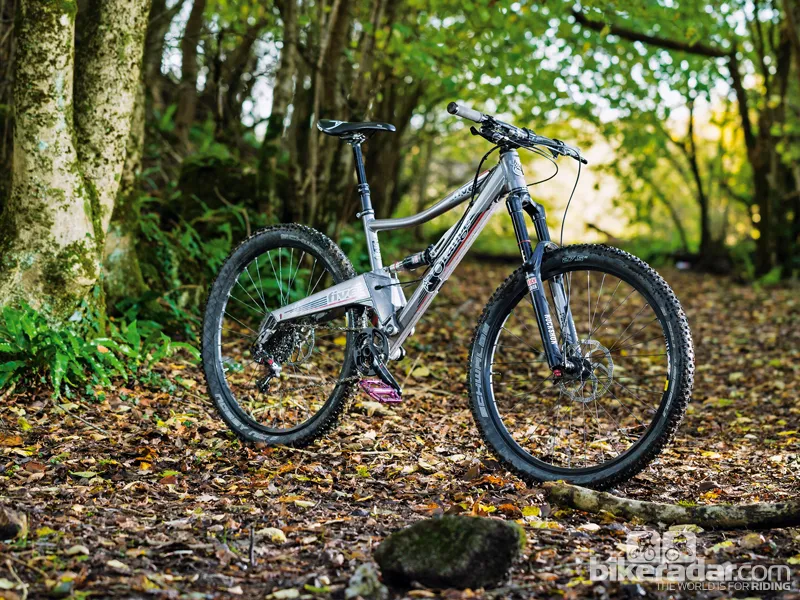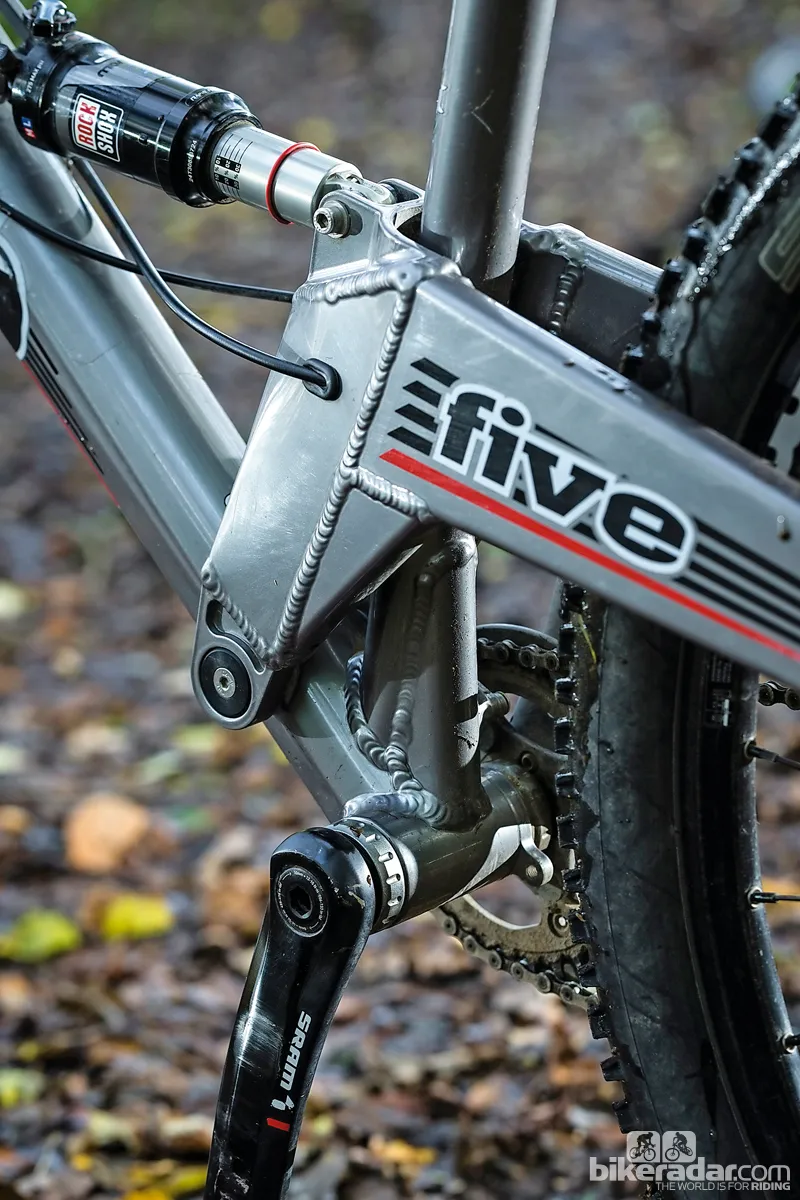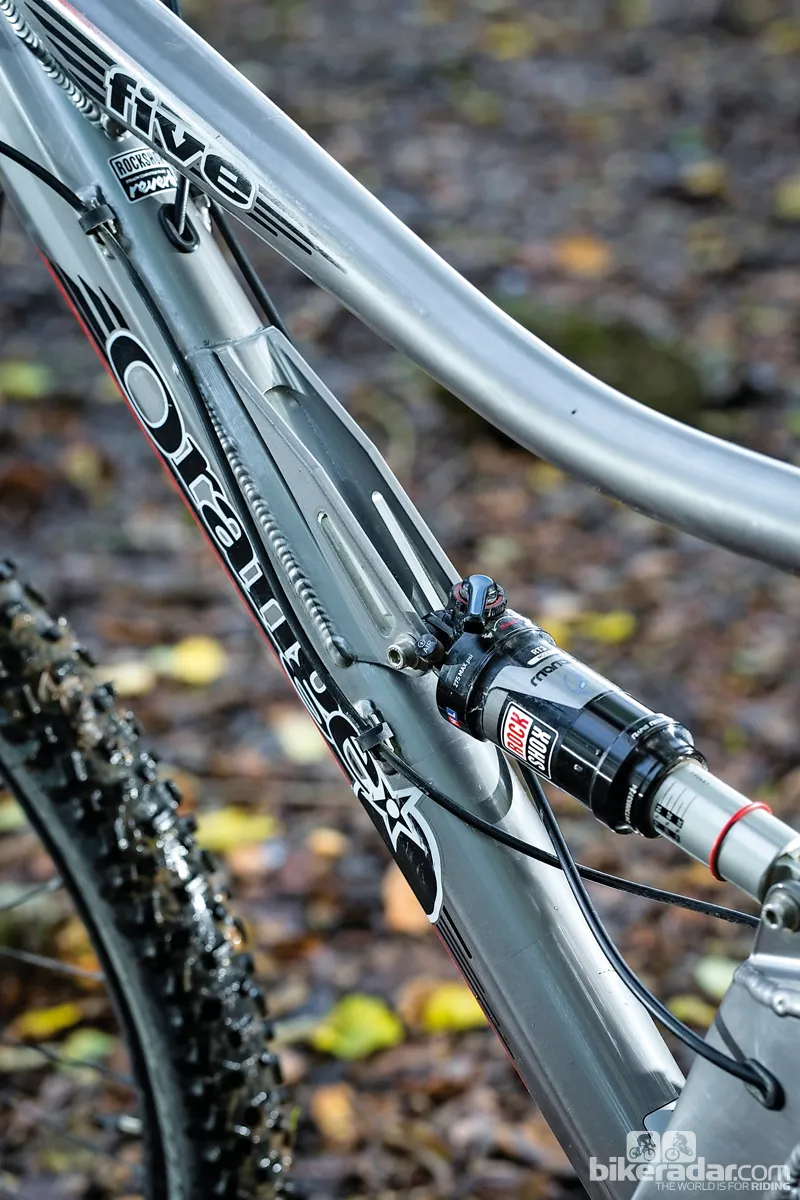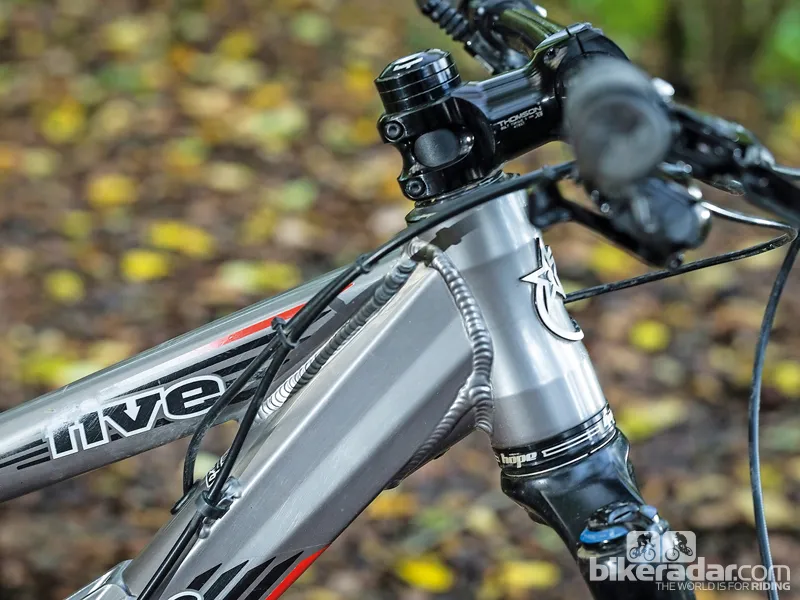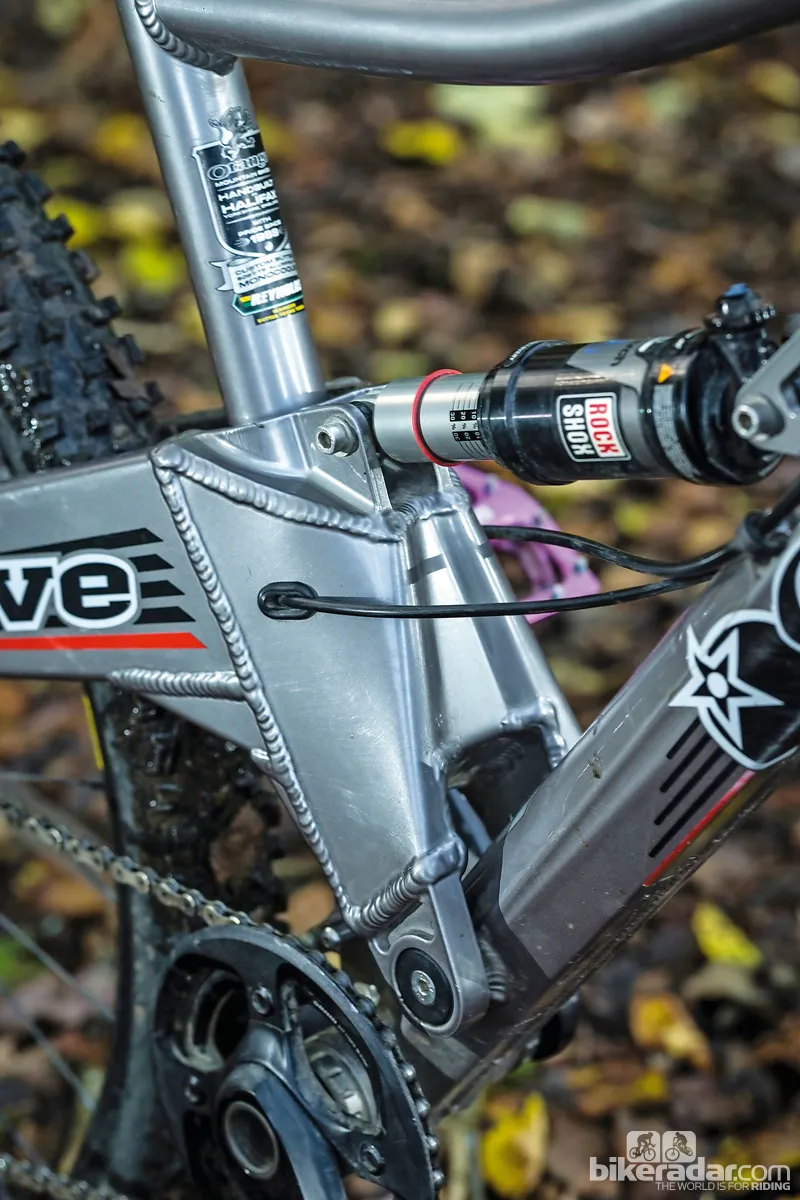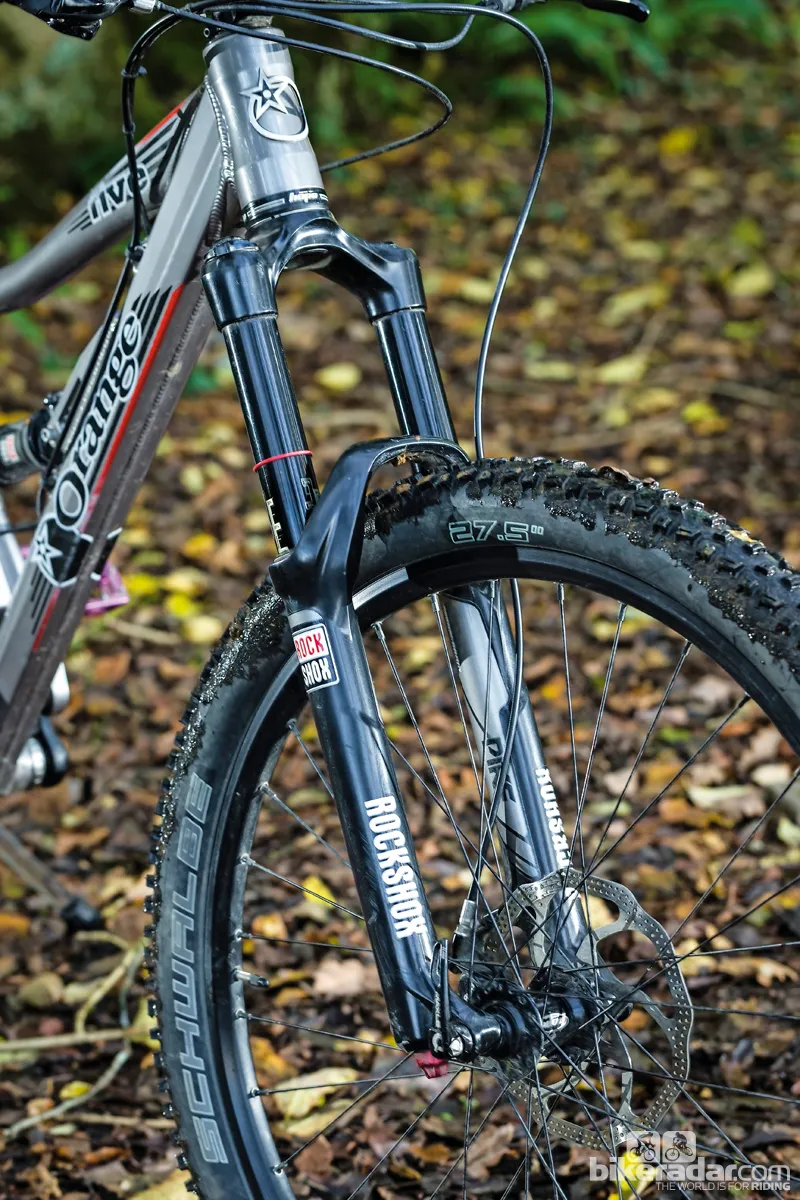The 2014 Orange Five RS is a bike that comes with its fair share of controversy. Let's just say that should you want to upset people, try taking a staple of the British riding scene – a bike known for its unflashy simplicity, resistance to major change and general conservatism – and adding something completely new.
That's what Orange has done by switching its evergreen Five trail bike to 650b wheels, with no quarter given to those stick-in-the-muds still muttering about conspiracies, marketing and… well, we stopped listening there. But the 26in-wheeled Five is no more.
Frame and equipment: same same but different
Scratch the surface and there's more that's new about this Five than some slightly bigger wheels. There's been a mass of geometric tweaking, including a longer top tube, a kicked-back head angle, altered suspension geometry and pivot location, and a move to a takes-any-fork straight 44mm internal-diameter head tube from the slightly heavier tapered item. It's also finally got a proper 142x12mm rear end, which means wheel fitting is much easier than with the older 135x12mm design.
This is the top of the line RS model, which comes kitted with a full house of SRAM parts, including the superb RockShox Pike RCT3 fork with 150mm of travel; the 140mm of bounce at the back is taken care of by a Monarch RT3.
The 11-speed SRAM X01 drivetrain is a highlight, with a gear range wide enough to cover most riding without the weight and complication of front shifters and rings. Note the RS frame, unlike any other in the range, actually lacks a front mech mount entirely.
We'd also like to see a more aggressive cockpit than this admittedly lovely-looking and lightweight pairing of Thomson's carbon bars and X4 stem. At 730mm wide and 70mm long respectively, they're just a bit too narrow and long for really mastering control of the slack, confident 66.5-degree front end.
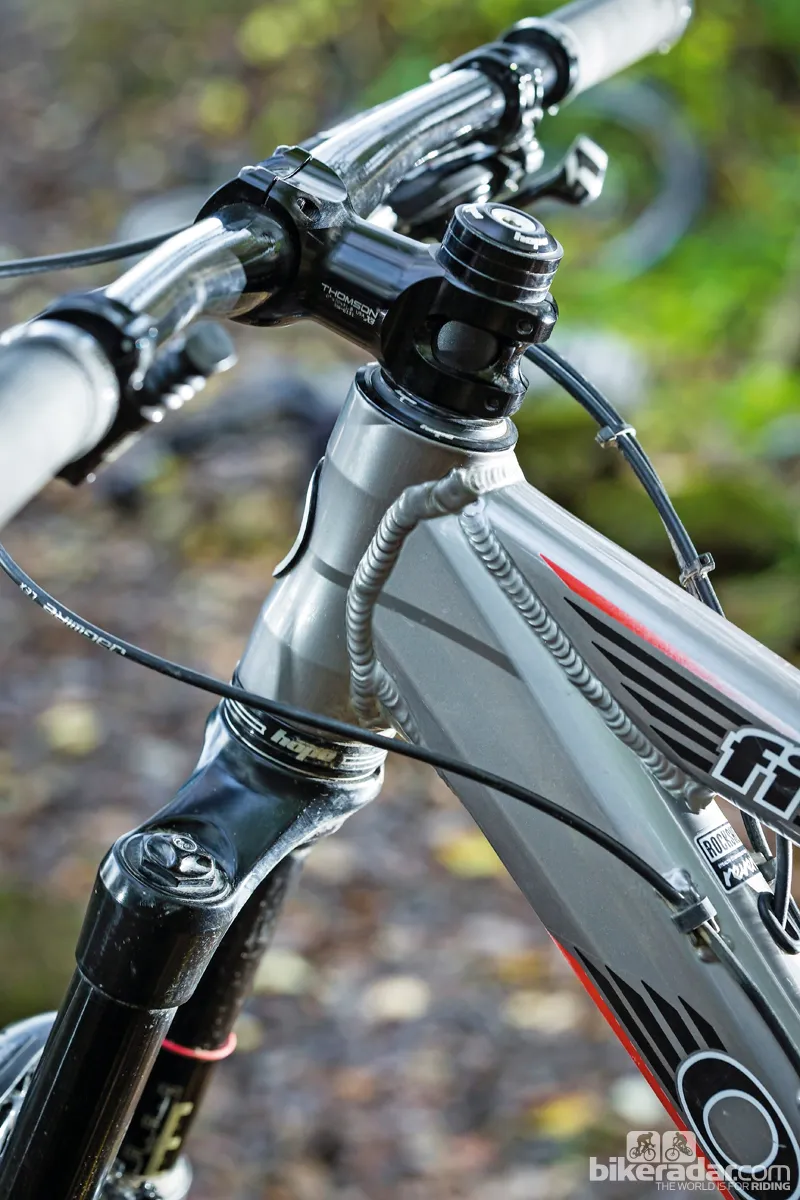
A more aggressive cockpit would be welcome
Orange offer a Renthal 780mm bar and 50mm stem combo as an upgrade on its other Fives, but not this limited edition RS… disappointing, but it'll probably be phased in as full production begins. We recommend ticking that box if you can.
Ride and handling: Five is as Five does
The single front-ring neatly sidesteps the single-pivot design's tendency to react badly to pedalling in certain sizes of chainring, and gives less kickback though the cranks when you hit rocks too. Another bonus is the lack of clutter on the bars making the dropper post remote for the internally routed Reverb second nature to operate, even at full speed.
With the 32-tooth front ring it's pretty neutral, though by nature the long swingarm creates a fair amount of chain growth as you get deep into the stroke. It's not a bike that isolates you entirely from the ground in the way that, for instance, Split-Pivot designs can, but that's always been part of its charm – feedback is rich and detailed.
The same goes for when you're grabbing a big handful of the powerful and progressive Elixir 9 Trail brakes. The rear end stiffens markedly to skip, slide and rattle instead of grip, which can catch you unawares – and unsettling the bike if you make the error of brake-dragging mid corner. Do your braking early, use that kick forwards to load the front and you can make it work to your advantage, tightening turns with a light touch of drift before getting on the pedals, shifting grip rearwards and enjoying maximum exit punch.
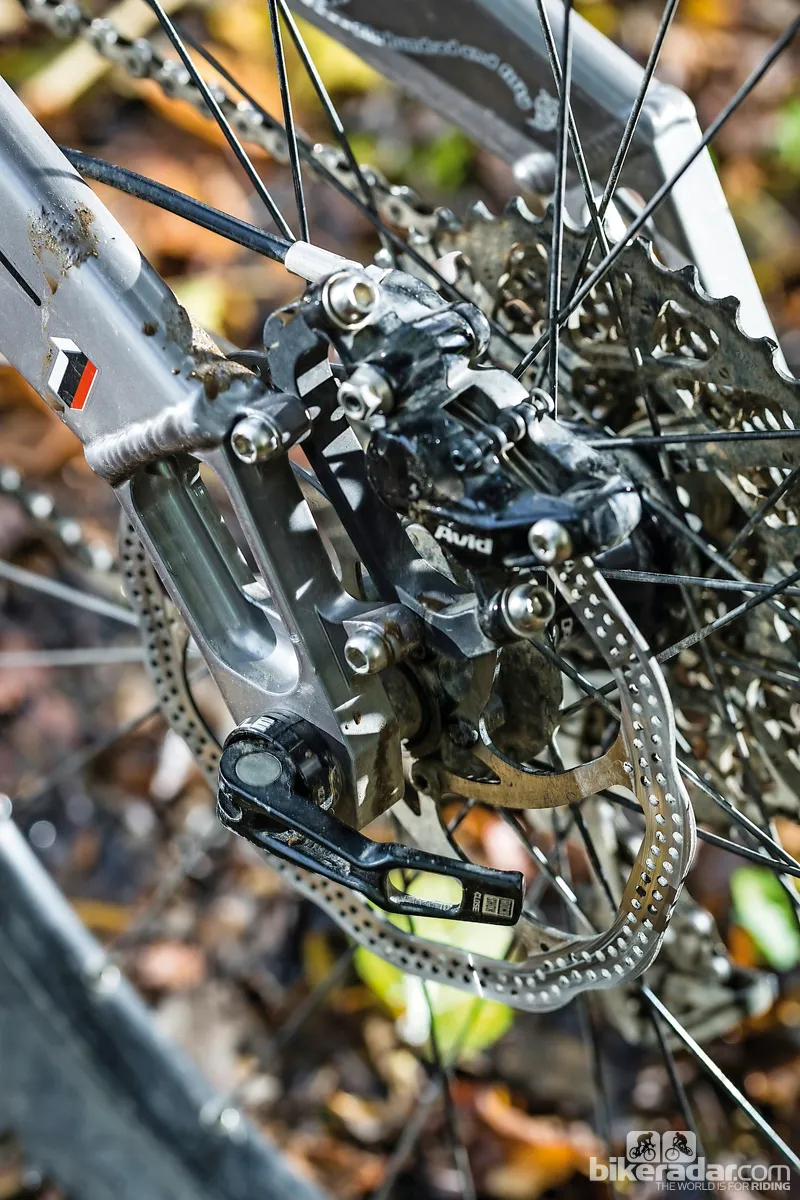
"Powerful and progressive" Avid Elixir 9 Trail brakes
It's a very satisfying feeling when it comes right, though for flatter pedally sections it definitely pays to leave the shock in 'pedal' mode (there's a clue there), as the suspension can feel somewhat soggy and bobby if you leave the shock fully open.
The spacious cockpit helps with this weight shifting dance, giving plenty of room to aggressively shift about. It's important to keep on top of this however, as although the effective seat angle is a steep 74 degrees, the seat tube is offset for better clearance and actually kicked back at 72 degrees. This puts your weight well back when you're sat down pedalling, and it requires a concerted effort to weight the front wheel for corners. Be passive and the Five can get understeery on flat turns and rather wandery on climbs.
This issue is exacerbated by the frankly awful hard compound Schwalbe Nobby Nic tyres, which are quite happy to let go at the slightest hint of water and aren't the most predictable once they do start letting go. We quizzed Orange about this choice of rubber on what's supposed to be an aggressive enduro racing bike, and it admitted that supply issues had limited its choice with early production runs. We're dearly hoping it moves to a more suitable soft compound and potentially a more aggressively-shouldered tyre as soon as possible.
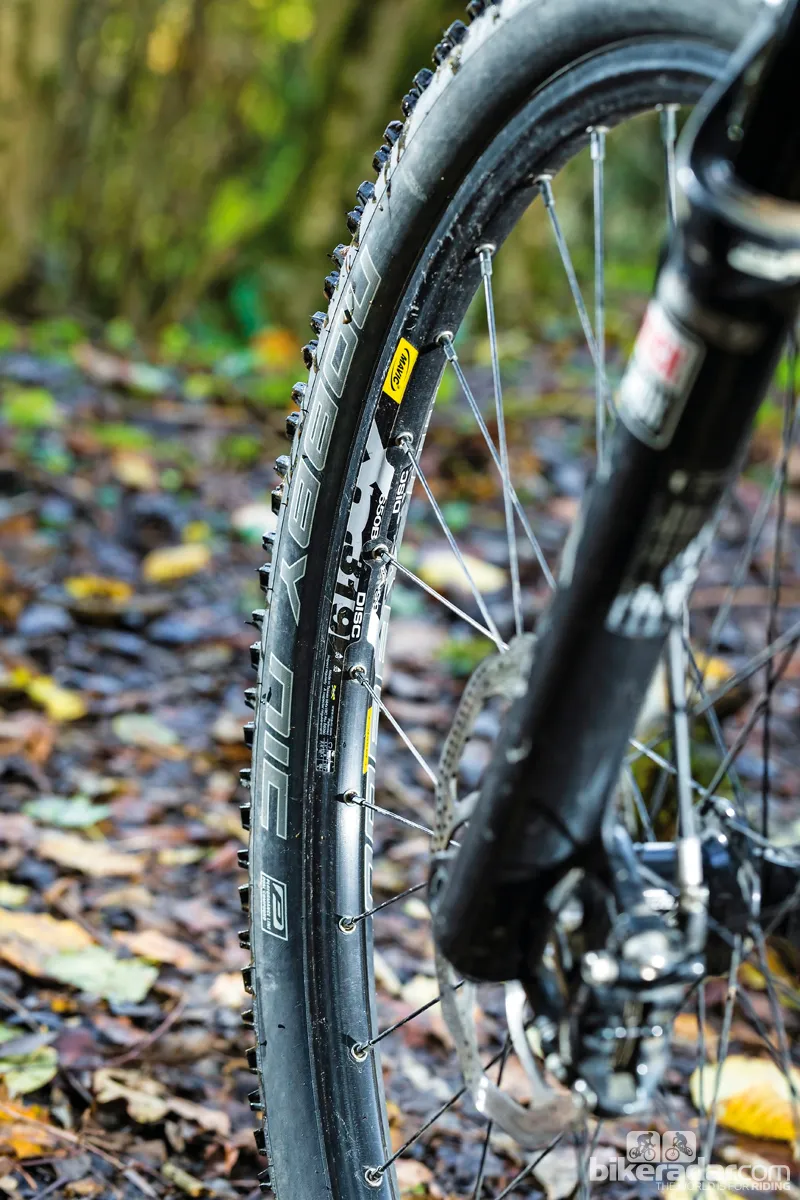
The Nobby Nic tyres were a pretty odd choice
All that said, if you get your head down when climbing it's an effective technical height gainer, with the easy to understand mechanics of the suspension allowing you to bounce, force and push your way onwards and upwards despite the lack of grip.
The RockShox Pike fork offers masses of grip from a supple beginning that's balanced with great support further into the stroke. Smack it really hard and it recovers from near bottom-out brilliantly, thanks to the Rapid Recovery system found in the sealed Charger damper.
The strength of the 35mm-legged chassis allows you to push on with confidence in rough terrain, and the adjustable low-speed compression damping on the open mode – along with pedal and lockout modes – make it easy to fine-tune to trail conditions.
With more aggressive tyres and cockpit fitted, we did begin to eke out some torsional twang from that long swingarm and the main frame. It's always been a feature of Orange bikes, and the slight compliance and the way it unloads on corner exits does affect accuracy but, like so much with the Five, it just adds to a characterful and involving ride feel – albeit one dulled slightly by the low-spec Mavic XM319 rims on those durable Hope hubs. It's a heavy rim and narrowish rim, and a cost-saving measure – necessary to keep this British-built, low-volume bike competitive against direct sales giants and mega-brands with far greater buying power.
To judge the Five too harshly on its lower spec is to miss the point, though – like comparing a Caterham to an Audi and complaining about the lack of air conditioning. One is an affair for the heart, while the other is a choice made with your head.
Wheels notwhithstanding, this bike remains the Orange Five through and through. It's to the company's credit that there's only a slight change in the overall feel after the move to 650b. It's a bit more planted, there's more grip and while it's less keen to change tack hurriedly, it's a hyper-stable bomber at speed and can still take on nine-hour Peak District loops, full-on enduro races and everything in between.
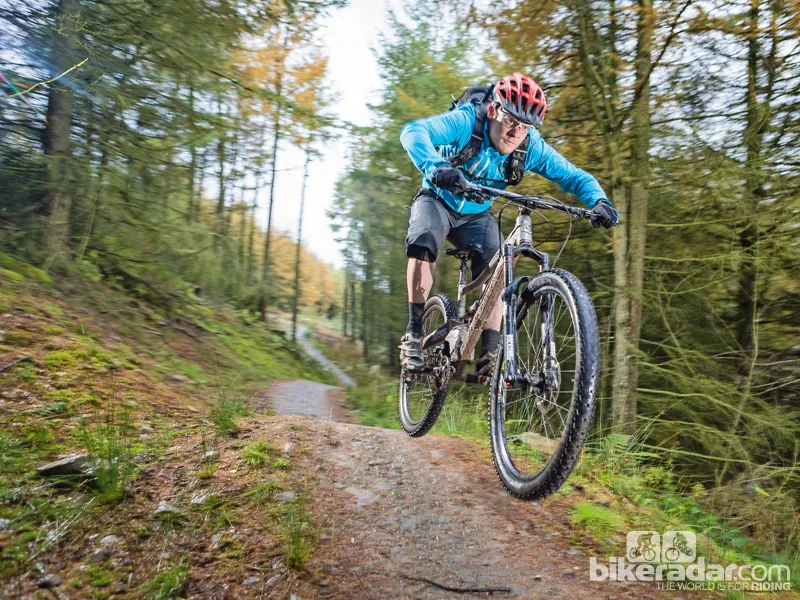
We only noticed a slight change in feel compared to the 26in-wheel Five
It will never compete on spec, but its true value isn't to be found in numbers and names; it's in the sense of this bike being something a bit special, and the performance to back it up. In that sense, the new Five is the same as the old Five – a fantastically fun bike.
